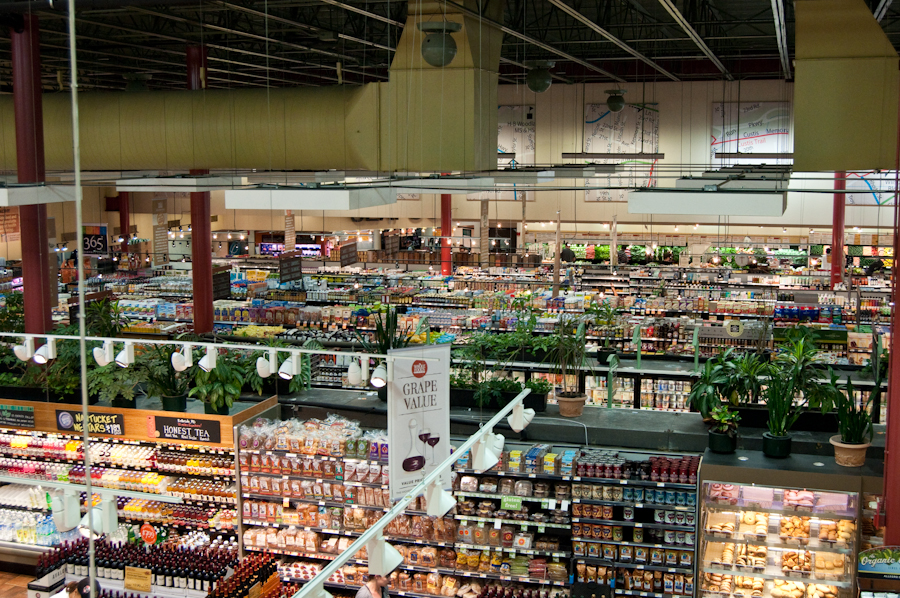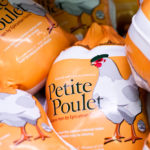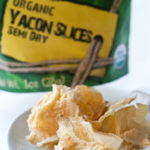Welcome back to our interview with Chef Michael Kiss of the Arlington Whole Foods Market who will teach you how to food shop like a chef! In case you missed it, read Part I. To view more photos from the interview, visit http://staceyviera.zenfolio.com/wholefoodschefinterview
In this affluent, well-educated neighborhood, Arlington’s Whole Foods is a “top-performing store” out of the nearly 300 located throughout America, Canada and the United Kingdom. Though smaller in size than most, the Arlington shop does incredible volume, which means that products constantly rotate and are being replaced with fresh ones.
I walked the store with Chef Michael, learning how to shop like a chef. He peppered the conversation with the corporate talking points you’d expect from Whole Foods. But first, we began our educational walk through the shop in the produce department.
Kiss began, “Let the produce department tell me what to cook. Grab one ingredient and get excited about it.” If you’re anything like me, you gravitate to the sale produce. Kiss said that Whole Foods uses sales to emphasize the seasonal items, not necessarily to clear out food past its prime.
To Kiss, enjoying seasonal ingredients isn’t about only eating them when they’re in season, but it is to “celebrate ingredients when they’re at their best.” Asparagus is a great example. Whole Foods provides a source of asparagus year-round – ah, the beauty of imports! – but will put it on sale this time of year to encourage customers to enjoy it when it’s at its best. Look for asparagus from upstate New York and Michigan arriving in May or June, Kiss suggested.
And look in the corners of the displays to find ingredients that might not usually be a staple in the department, like the parsley root he pointed out. “It’s a spring vegetable, similar in flavor to a carrot but with a definite parsley note.” Kiss noted. “Shred it to make a coleslaw, mix it with shredded pork and serve that on a tortilla.”
Artichokes. Cut the top ½ inch, scoop out the “flowery part” inside, cut the tip of each leaf, put it in a baking dish with stock, oil, bread crumbs, cheese and herbs stuffed in the leaves. Bake it for 45 minutes or so at 350, and most of the inner leaves should be soft and edible. You can even peel the stalk and eat it. The texture is much like asparagus, according to Kiss.
He noted that Whole Foods is about giving people choices. For some, it is a gourmet shop or a go-to store for organic and local foods. Organized trucking systems means “local” is a 275-mile radius around the store. Providing healthy and nutritious products is a cornerstone of the business.
Team members are encouraged to practice what they preach to customers, and the company is involved in Dr. Joel Furhman’s healthy eating initiatives. Health is a topic of great concern to CEO John Mackey, and employees are now incentivized to get healthier. Through a voluntary program, if biometric indicators are within healthy levels for weight and body type, the employee discount for purchases jumps from 20 to 30 percent.
Kiss made the choice at the beginning of the year to live a healthier lifestyle. Before he cut out 80 percent of his alcohol consumption, started going to the gym daily with his wife and eating more nutritious meals, he weighed 290 pounds. In just over 90 days, he’s dropped 50 pounds and gained healthy muscle mass. His pant size alone went from a 44-inch waist to 38 inches. He said his mood, energy, and stress levels are the best they have ever been. “I always knew my healthy friends were telling me the truth about how good they feel leading a healthier lifestyle, but it was like I had a sack full of excuses to not go for it myself. Eventually the sack became empty.”
In spite of all our discussion about balancing the diet and packing in lots of nutrients, Kiss revealed his “deep, dark passion in the charcuterie arts” and that “I will never become a vegetarian because God made pork belly.” Every Food Fits in moderation.
In the bulk food section, Kiss enthusiastically pointed out quinoa, which he suggests using in place of rice or couscous for a change of pace. Bulk food bargains vary, but overall, there is a discount when buying in bulk. And for those who are concerned that some folks stick their grubby little hands into the bins, Kiss said that at such a high volume store, bins in the bulk section empty frequently. The almonds, for example, are usually refilled five times each day.
And what a selection of beans! Beans – to soak or not to soak? To avoid the bacteria that could grow overnight in a bowl of soaking beans, Kiss offers an alternative method. Put the beans in a pot of water, boil it for five minutes, take it off of the heat, and then let it sit for one hour in the hot water. Drain the beans and refill with fresh water, then cook as desired. Moisture is important, as it primes the beans to carry flavor, and Kiss warned, “don’t add salt too early” because it slows cooking and interferes with texture. Rather, salt your beans to taste just as they finish cooking.
For people with uncooperative stomachs who might not otherwise be keen on eating beans, Kiss said the adzuki bean is the most easily digested lentil. Adding a bay leaf and cumin to beans is rumored to help neutralize some of the gases for which beans are infamous.
An important thing to remember about cooking at home is a clean kitchen is a happy kitchen. Kiss’ final tip might help make your food go farther. He recommends cleaning out the refrigerator – remove the shelves and drawers, too – and wiping it down with a bleach solution every three months. Add one or two capfuls of bleach to a gallon of water and wipe down the inside of the fridge with a clean cloth. “Food lasts two weeks longer than if you don’t clean the fridge,” Kiss said.
After taking up more than an hour of his time, I thanked Kiss for sharing his expert advice, promising him that if I didn’t leave then, he’d probably never get rid of me.
In an e-mail following our chat, he answered additional questions about his job, and revealed a truth that might make you jump out of your office chair this afternoon, hand in your resignation, and apply for the job of your daydreams.
“It is my favorite thing in the world when a customer tells me how I convinced them to go for the quinoa and arugula and how they were terrified to cook it, but they followed my directions, especially the most important rule of cooking – Relax, it is just food! – and everything turned out great.”
This is the first post in a series with Michael Kiss. In future posts, he’ll take you through each department in the store to learn how to shop like a chef. Follow the Arlington, Va., Whole Foods on Twitter and Facebook for news on Chef Michael’s cooking classes and other in-store specials. To view more photos from the interview, visit http://staceyviera.zenfolio.com/wholefoodschefinterview






[…] the full article or see part two of the […]
[…] produce come from neighboring states. Swallow classifies “local” at about a 300-mile radius, a similar number to that which other chefs have […]
[…] may remember that Every Food Fits profiled Chef Michael a few weeks ago – see Part I and Part II of that interview – and readers seemed to love his tips. After I came home with pages and pages […]
[…] healthier food sourced locally. Local local local. The buzzword of the decade. We’ve heard from Whole Foods that local is a 275-mile radius, Mixt Greens says it’s 300, and Silver Diner prefers suppliers […]